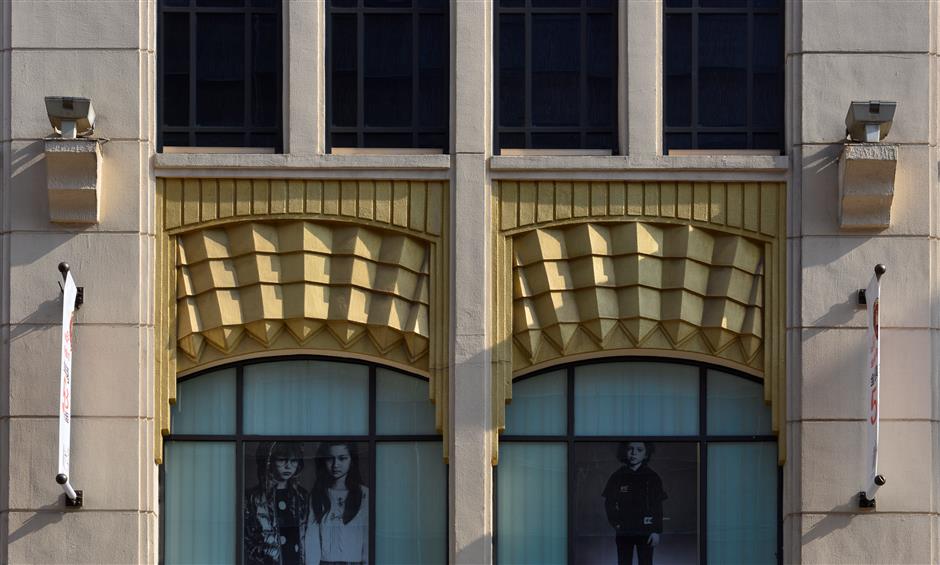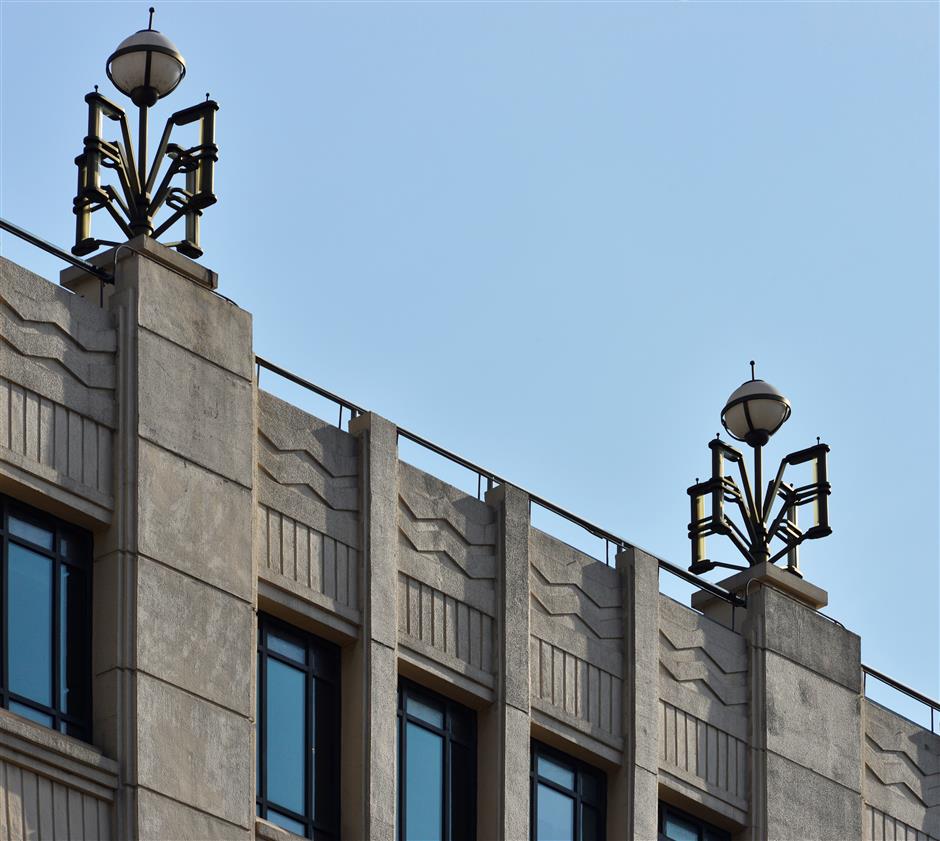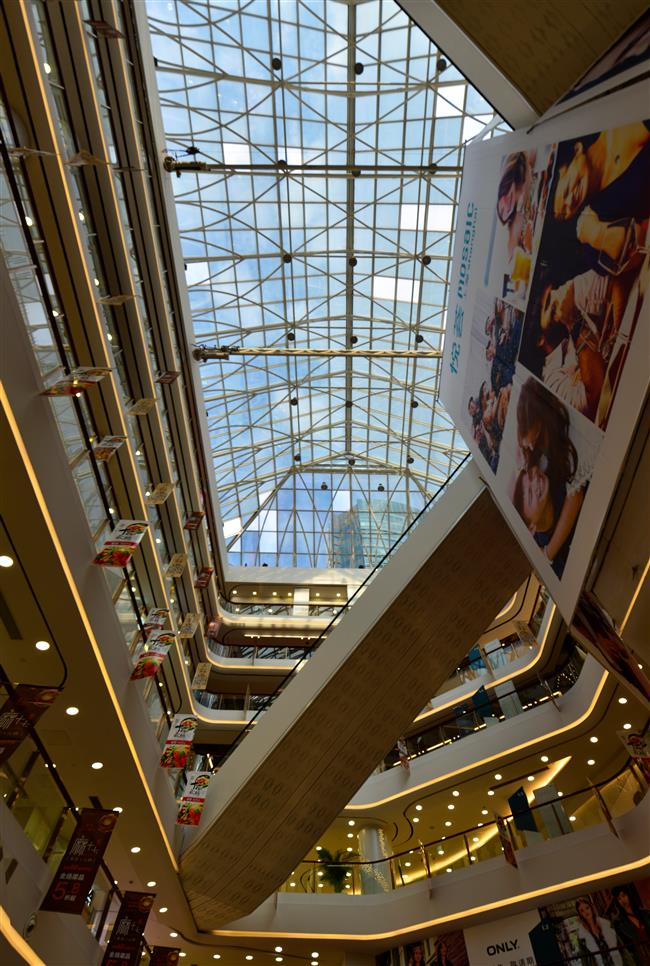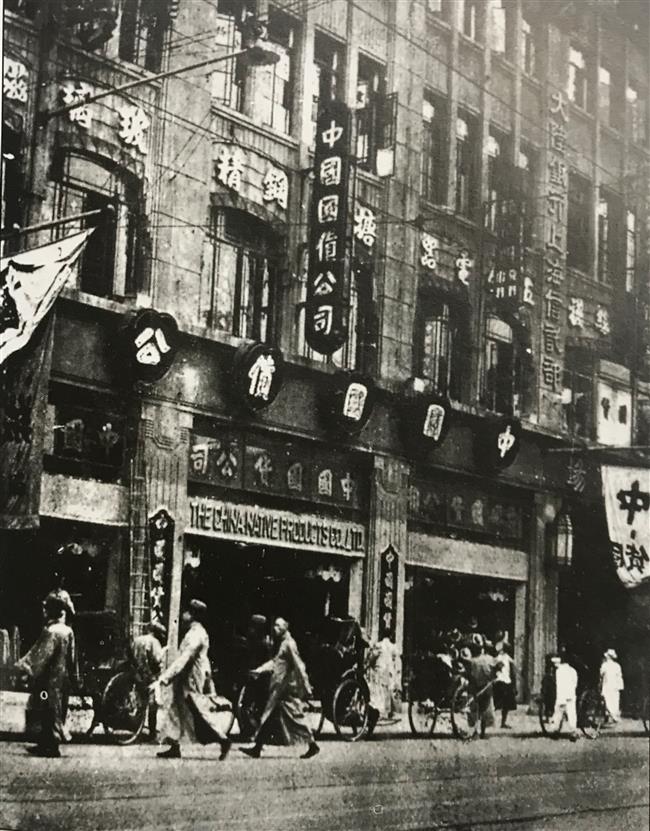Continental Emporium failed to live up to its billing

The Continental Emporium, invested by the Chinese-owned Continental Bank during the 1920-30s, was designed in the shape of a modern Western office building.

The Art Deco-style tower
Nanjing Road had a reputation as “China’s Fifth Avenue,” but not all commercial establishment on the street enjoyed success. The grand Continental Emporium, built in 1931, seemed to be a promising project at first but failed to reap in the profits for its investor, the Continental Bank.
“The emporium was designed in the shape of a modern Western office building. It was enclosed by walls with a large yard inside with cars driving into the building. The facade displayed a simple Art Deco style but essentially had only two Art Deco elements, the tower and the vertical lines,” says Tongji University professor Qian Zonghao, author of the book “Nanjing Road (1840s-1950s).”
Back in 1931, the emporium was called a “million-dollar building” and “ambitious scheme underway on Nanking Road” by North-China Herald.
“The newly established Trust Department of the Continental Bank has recently decided to materialize what may be considered a very novel and ambitious project that promise not only to enhance the beauty of Nanking Road, but also to meet a real demand of the local populace,” the newspaper reported on April 14, 1931.
The report said the 7-story building housed a large emporium, which was similar but more gigantic than the famous East City Mart in Beijing. The project took up a whole block on Nanjing Road with spaces for office rooms, restaurants and a modern hotel.
The frontage on Nanjing Road was more than 300 feet (90 meters). In order to enable automobiles to reach any part of the building, a T-shaped lane was constructed within the premises.

The facade displays a simple Art Deco style with vertical lines and geometrical ornaments.

A seemingly golden project
The project was initiated during the “golden era” of Shanghai — from the 1920s to early 1930s — when the economy was booming. Big department stores on Nanjing Road were flooded with customers and imported products would sell out quickly.
With soaring deposits, local banks were eager to invest the funds in bonds, stocks and real estate. Many of the city’s well-known high-rises were built during this period by financial institutions such as the Park Hotel by Joint Savings Society or the Picardie Apartments (today’s Hengshan Picardie Hotel) by International Savings Society.
Continental Bank was one of the four big northern Chinese banks that formed the Joint Savings Society, a cooperative venture and an influential Chinese financial institution founded in 1923. With deposits and trust savings of more than 10 million Chinese dollars in the late 1920s, Tan Lisun, founder and general manager of Continental Bank, couldn’t resist the temptation of investing in Shanghai’s booming real estate market.
“So he had this ambitious plan to build a department store at a great location and nice square shape on Nanjing Road to sell Chinese products and compete with the four big Chinese department stores on the street. To boost the reputation of Continental Bank, he named the building Continental Emporium,” says Xin Jianrong, deputy director of Shanghai Archives Bureau and also an historian on Shanghai financial history.
Xin says the project appeared to be a smart investment by Tan and his team as both the city’s economy and real estate market were soaring. The bank commissioned Chinese architect Zhuang Jun to design the building after renting the site from Jewish tycoon Silas Aharon Hardoon who owned many properties along Nanjing Road.
Zhuang went to study architecture in Illinois University in the United States in 1910, and later at the Columbia University in 1923. He established his own design studio in Shanghai in 1925.
Among a galaxy of Chinese architects in old Shanghai, Zhuang was the first to study abroad and also the first to return home and practice architectural design in China.
Wu Jiang, vice president of Tongji University, says Zhuang initially preferred Western classical style, like his noteworthy work, the Kincheng Bank (today’s Bank of Communication at 200 Jiangxi Road M). But Continental Emporium marked a change of style in which he thoroughly abandoned classical decoration, adapted Art Deco patterns and designed a simple-cut architectural appearance.
Zhuang’s later work such as the Sun Ke Jian Maternity Hospital showcased a more modern “international style.” He also founded the Society of Chinese architects to unite the Chinese architects in a market with foreign architects.
He lived until the age of 102. His grandnephew, Zhuang Shitao, recalls that “he was good at a variety of sports like running, jumping, swimming, football, tennis and climbing. He would take bath in cold water at the age of 92 and go for walks every day till the age of 96.”

Today the building is a shopping mall featuring shops, restaurants and entertainment.
Business declined
But the Continental Emporium took a hit after the Japanese army invaded Shanghai in 1932 and the “silver crisis” broke out in 1935. Nanjing Road was no longer as prosperous as before. The Continental Emporium struggled to lease out much of its shopping space on the three floors. The top floors were used as offices.
“Compared with the four big department stores on Nanjing Road which offered the most fashionable, upper-class imported products like French cosmetics, Swiss watches or German instruments, the Continental Emporium was filled with small-sized shops that sold middle-level products and failed to attract the wealthy families and were also out of reach of the ordinary citizens. The offices, too, did not have a decent environment,” historian Xin says.
After 1949, the gigantic building housed state-owned shops and later opened the flagship Xinhua Book Store, where professor Qian and historian Xin frequently visited as “books unavailable anywhere else can be found here.”
Today, the big bookstore has retreated to a much smaller shop in the building, which is again a shopping mall featuring shops, restaurants and entertainment.
Next year the mall will import an entertainment project, “The Shanghai Dungeon,” which will be operated by Merlin Entertainment from UK.
The “Shanghai Dungeon” will be the fourth Merlin attraction in Shanghai after Madame Tussauds, Legoland Discovery Center and Changfeng Ocean World. The project will use themed sets, live actors and cutting-edge technology to take visitors on a journey back in time.
Xin says the Continental Bank spent more than 3.7 million Chinese dollars on the project back in 1937 but only recovered 1 million. The bank had to sell the department store to Hardoon’s company at a low price.
“I’m not sure if this failure had anything to do with it, but manager Tan became depressed and died of illness soon after. At an era of social transformations and unstable political condition, investment on real estate was always full of risks and dangers,” Xin says.
History is often a good lesson. The history of the emporium itself will add a special color when the Merlin recreates the city’s colorful past.

An archive photo of the Continental Emporium
Architecture details
Yesterday: The Continental Emporium
Today: The Mosaic Mall
Address: 353 Nanjing Road E.
Architectural style: Art Deco
Architect: Zhuang Jun
Tips: Please admire the simply cut Art Deco facade designed by the renowned Chinese architect.
















